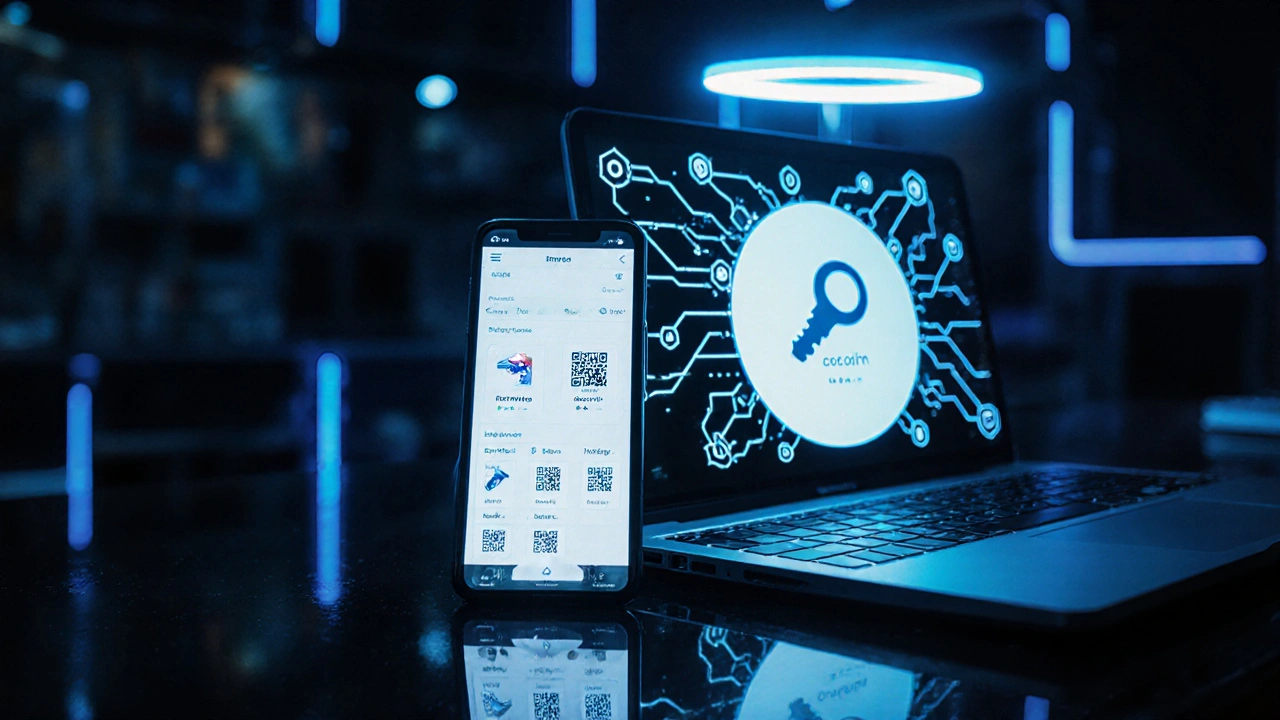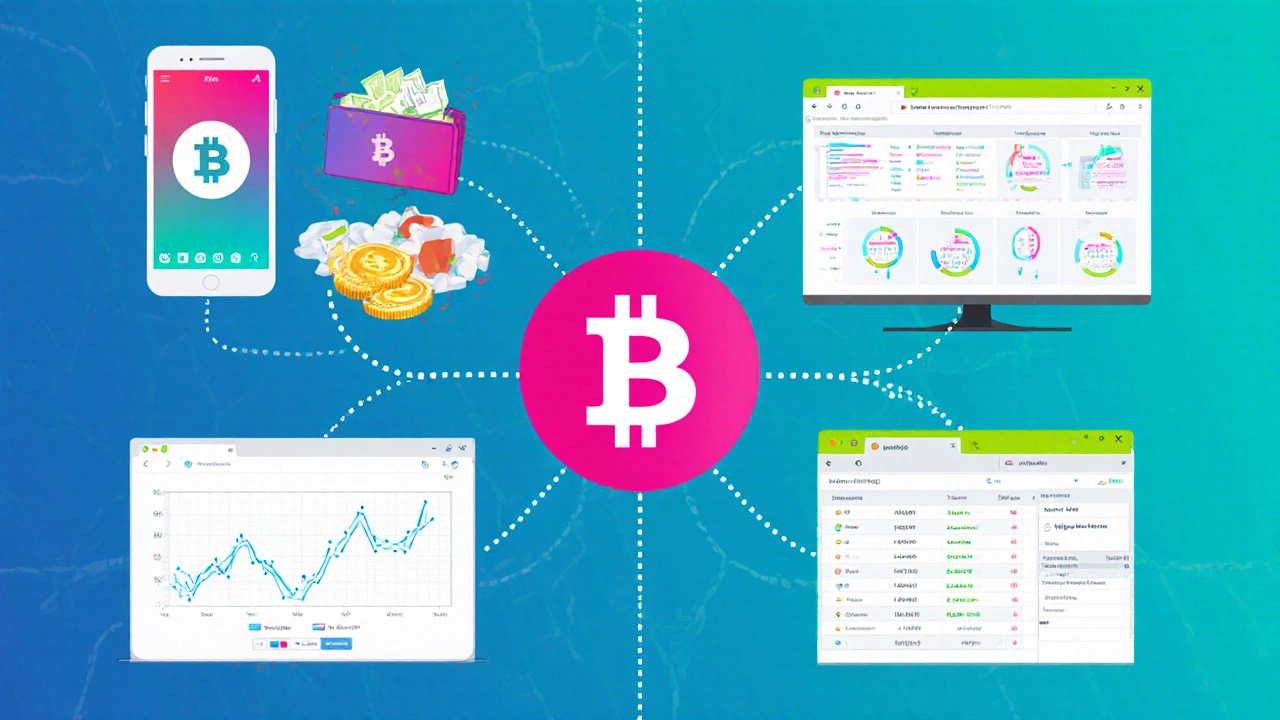1
Hot Wallet Explained: What It Is and How It Works in Crypto

Key Takeaways
- A hot wallet is a crypto‑wallet that stays connected to the internet for quick access.
- It stores private keys locally on a device or on a web service, making transactions fast but exposing them to online threats.
- Hot wallets are great for daily spending, trading, and receiving payouts, while cold wallets are better for long‑term storage.
- Security best practices like 2FA, strong passwords, and keeping only a small balance in a hot wallet can dramatically lower risk.
- Choosing the right wallet depends on how often you move funds and how much you can tolerate potential loss.
What Is a hot wallet?
A hot wallet is a cryptocurrency wallet that remains connected to the internet, enabling instant send and receive actions. Unlike a cold storage solution, a hot wallet keeps the private keys- the digital signatures that give you ownership- either on a device (phone, laptop) or on a cloud service. This connectivity fuels speed but also opens a door for hackers, malware, and phishing attacks.
How Hot Wallets Work
When you create a hot wallet, the software generates a private key and a matching public key. The public key is turned into your wallet address, which anyone can share to receive funds. The private key never leaves the device (or the encrypted server) and is required to sign each transaction.
Most modern hot wallets also give you a seed phrase-12 to 24 random words that can recreate the private keys if you lose access to the device. Guard the seed phrase like you would guard cash: write it down, store it offline, and never type it into a website.

Hot Wallet Types
- Mobile wallets: apps on iOS or Android, perfect for on‑the‑go payments. Examples include Trust Wallet and MetaMask Mobile.
- Desktop wallets: software downloaded to Windows, macOS, or Linux. They offer richer features for trading and token management.
- Web wallets: browser‑based interfaces hosted by a service provider. They are handy for quick swaps but rely on the provider’s security.
- Exchange wallets: accounts provided by a cryptocurrency exchange such as Binance or Coinbase. They let you trade instantly, but the exchange controls the private keys.
Security Pros and Cons
**Pros** - Speed is the headline benefit. Because the private key is readily available, you can confirm a transaction in seconds, which is essential for day‑trading, paying for online services, or moving funds between platforms.
**Cons** - The same accessibility creates a larger attack surface. If malware captures your private key or seed phrase, the thief can empty the wallet instantly. Phishing sites that mimic legitimate login pages are a common vector.
Most hot wallets mitigate risk with two‑factor authentication (2FA), biometric locks, and encrypted storage. However, these measures only protect the device or service; they can’t stop a determined attacker who gains physical access or exploits a zero‑day vulnerability.
Hot Wallet vs Cold Wallet: Quick Comparison
| Feature | Hot Wallet | Cold Wallet |
|---|---|---|
| Internet Connection | Always connected | Never connected (offline) |
| Transaction Speed | Seconds | Minutes to hours (depends on signing method) |
| Typical Use Case | Daily spending, trading, receiving payments | Long‑term storage, large holdings |
| Risk Level | Higher - vulnerable to hacks, phishing, malware | Lower - physical theft only |
| Device Type | Mobile, desktop, web, exchange accounts | Hardware devices, paper backups |
| Cost | Often free or low‑cost (service fees may apply) | Hardware wallets cost $50‑$200; paper backups are cheap |
Best Practices for Using Hot Wallets
- Keep only a small amount online. Store the bulk of your assets in a cold wallet and reserve a few tokens for daily activity.
- Enable 2FA. Use authenticator apps rather than SMS codes, as SIM swapping is a known attack.
- Update software regularly. New releases patch vulnerabilities that could expose private keys.
- Never share your seed phrase. No legitimate service will ask for it.
- Use reputable wallets. Check community reviews, open‑source code, and audit reports before trusting a new app.
- Separate wallets for different purposes. One wallet for trading, another for receiving salary payments, etc.
When to Choose a Hot Wallet
If you need to move crypto several times a week, or you run a business that accepts crypto payments, a hot wallet is the practical choice. Developers building decentralized applications (dApps) also rely on hot wallets to sign transactions directly from the browser.
Conversely, if you’re holding a large stash of Bitcoin for years, a cold storage solution-like a hardware wallet-will keep your funds safer.
Think of a hot wallet as a debit card: you keep a modest balance for everyday purchases and a savings account for long‑term goals.
Frequently Asked Questions
Can I use a hot wallet on multiple devices?
Yes. Most mobile and desktop wallets let you export your seed phrase and import it on another device. Just make sure the new device is secure and that you delete the wallet from any device you no longer trust.
Are exchange wallets considered hot wallets?
They are technically hot wallets because the exchange keeps the private keys online. However, you are trusting the exchange’s security measures, not your own.
What is the biggest risk of keeping crypto in a hot wallet?
A compromised device or phishing attack can give an attacker immediate access to your private keys, letting them drain the wallet in seconds.
Do hot wallets support all cryptocurrencies?
Most popular hot wallets cover Bitcoin, Ethereum, and major ERC‑20 tokens. Niche altcoins may require a specific wallet or a manual entry of contract addresses.
How often should I change my hot wallet password?
At least every three months, and immediately if you suspect any breach. Use a unique, high‑entropy password for each wallet.








